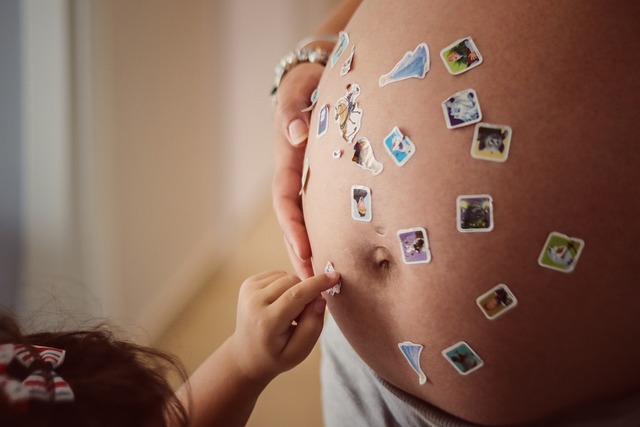Many women who have undergone tubal ligation, often called “getting your tubes tied,” may find themselves wishing for another child due to changes in their life circumstances. The good news is that even after a procedure meant to be permanent, it is still possible to achieve pregnancy. Consulting with a reproductive endocrinologist is the first step to explore all available options.
Dr. Lisa Carter, a specialist at a fertility clinic, shares, “Women who have had tubal ligations often make for some of our most successful patients because they’ve demonstrated fertility in the past. Historically, the only way to conceive after a tubal ligation was through a surgical procedure known as tubal reversal. However, in recent years, in vitro fertilization (IVF) has emerged as another viable option.”
In most cases, IVF tends to be the more favorable choice, offering patients a higher chance of pregnancy in a shorter time frame while avoiding the need for major surgery.
Tubal Reversal Surgery
Tubal ligation can be done through various techniques, all of which create a blockage in the Fallopian tubes that hinders pregnancy. “The most common approach involves surgically removing a segment of the tubes,” Dr. Carter explains. “The objective of a tubal reversal is to reconnect these tubes to restore their functionality.”
Modern tubal reversal techniques typically require just one day for the procedure and about a week of light bed rest afterward. Three months post-surgery, a hysterosalpingogram (HSG) is performed to check the tubes’ status, ensuring they are free of blockages.
Success Rates and Risks of Tubal Reversal
The success of tubal reversal surgery depends on two main factors: whether there’s enough healthy tissue to reconnect the tubes and if the reattached tubes are long enough to function properly. Unfortunately, not all patients have tubes that can be effectively reconnected.
“Even when the surgery is deemed a success, complications such as scarring may occur, which could impede the flow in approximately 20% of cases,” Dr. Carter notes. If the HSG shows that the tubes are open, patients can start trying to conceive during their next cycle.
However, there’s a heightened risk of ectopic pregnancy following tubal reversal surgery, with a 10 to 20 percent chance of this occurring. Ectopic pregnancies can be dangerous and require immediate medical attention.
The overall success rate for achieving pregnancy after a tubal reversal is around 40% for women under 37.
IVF and Its Benefits
IVF offers another route for women seeking to conceive after tubal ligation. This process involves fertilizing an egg in a laboratory setting and then transferring the embryo directly into the uterus, circumventing the Fallopian tubes entirely.
Women with a good ovarian reserve or those who have previously attempted tubal reversal with no success are often strong candidates for IVF. Dr. Carter adds, “Couples facing other fertility challenges, such as advanced age or male factor infertility, can also benefit from IVF.”
An IVF cycle typically takes about two months to complete. Following several evaluations and a hormone suppression phase, patients begin a regimen of injectable hormones to stimulate egg maturation. This phase lasts about 10 to 12 days, culminating in an egg retrieval procedure. The fertilized eggs, either from the partner or a donor, develop into embryos for transfer. A blood test two weeks later determines pregnancy success.
At many clinics, the success rate for IVF can exceed that of tubal reversal, often showing rates of 50 to 60 percent for women under 38, even when only one embryo is transferred.
Key Considerations
- Time to Pregnancy: It generally takes about three months after tubal reversal to confirm success. The average time to pregnancy can extend to about two years. “This timeline can be daunting for many patients, especially those who are older,” Dr. Carter points out. IVF cycles, on the other hand, typically take around two months to complete, making it a quicker option for those eager to conceive.
- Age: A woman’s age plays a critical role in deciding between IVF and tubal reversal. As women age, the quality and quantity of their eggs decrease, making conception more challenging. Women over 37 are less likely to benefit from tubal reversal, as the associated risks and declining fertility make IVF a safer and more effective choice.
- Cost: Both tubal reversal and IVF range from $10,000 to $15,000, with tubal reversals typically not covered by insurance. Various financial programs can ease the burden of IVF costs, such as the Shared Risk 100% Refund Program, which offers multiple cycles with a refund if no baby is brought home.
- Male Partner’s Fertility: Evaluating the male partner’s fertility is essential. If there are issues, such as low sperm count, IVF may offer solutions like Intracytoplasmic sperm injection (ICSI) to enhance fertilization chances.
In conclusion, while both tubal reversal and IVF provide pathways to pregnancy after a tubal ligation, IVF often stands out as a more effective and quicker option, particularly for women of advanced age or those facing additional fertility challenges. For more insights on home insemination, check out this article on Springtime Delight, and for authoritative information, visit Make A Mom and Healthline.

